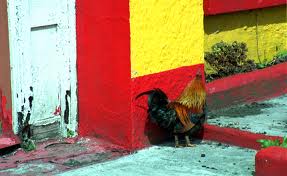
“There are painters who transform the sun to a yellow spot, but there are others who, with the help of their art and their intelligence, transform a yellow spot into sun.” -Pablo Picasso
When was the last time you sat around with your friends or colleagues and asked ANY of the following questions?
“What do you think the lateral area of this side of the cabinet is? I’d really like to get enough stain to refinish it.”
“Is your modern table a true example of a right prism or is it really just a cube?”
“I’m thinking of giving someone a gift in a cylinder. Does anyone know the surface area of a 5-lb container of oats?”
“Aren’t surface area formulas fun to say? Which ones are your favorites?”
I don’t know about you, but I have NEVER had this conversation with a group other than my students who had to learn it to pass a state test. If you teach middle school, junior high, or high school math, your students will benefit from learning the language of geometry. Who knows? After your dynamite unit on area, they might even begin to ask each other those kind of questions!
Some students have a good spatial intelligence and will immediately understand these concepts. Others will need to be provided with concrete, meaningful, and purposeful experiences as they explore areas of prisms and cylinders.
My mathematical history is sometimes bleak. It rarely included concrete experience of any sort. But, I have one really strong memory about geometry. In 6th grade we were all required to take an intelligence test–I think the district got some kind of special funding to teach those who were gifted in the arts. I remember being asked to choose the correct 3-dimensional shape which was represented by the “unfolded” figure. This question was followed by several other questions about the total surface area of the shape which had been created.
I studied all of the possible responses and really wanted to add my own…
d. I don’t play with blocks, so I don’t care. Next question, PLEASE!
Hopefully, the following resources will help you and your students as you explore the area of prisms and cylinders.
1. This activity is part of the TCS FREE high school mathematics ‘How-to Library’, and will help students find the surface area and volume of prisms.
http://www.teacherschoice.com.au/maths_library/area%20and%20sa/area_9.htm
2. Another dynamic set of activities from Gizmos. This set asks the students to vary the dimensions of a prism or cylinder and investigate how the surface area changes.
http://www.explorelearning.com/index.cfm?method=cResource.dspDetail&ResourceID=349
3. This page has a set of problems for determining the surface areas of prisms and cylinders with self-check. This is probably a little bit more fun than completing a worksheet.
http://hotmath.com/help/gt/genericprealg/section_9_4.html
4. This site is a part of the self-check quizzes from Glencoe. It only with only five problems, but the hints and illustrations are really helpful when exploring surface area of prisms and cylinders.
5. This slide show explains how to determine the surface area of prisms and cylinders. The slide show could be used as a great introduction, whole-class review, and as a resource for developing conceptual understanding.
http://www.slideshare.net/jessicagarcia62/122-surface-area-of-prisms-and-cylinders
6. Think Zone is website developed by Keith Enevoldsen which is loaded with LOTS of great resources. If you’ll scroll to the bottom of the page, the information about area is available in PDF format. Be sure and read his terms of use as you share this site with colleagues and students.
http://thinkzone.wlonk.com/Area/AreaVol.htm
7. For those of you have access to SMART boards, the SMART Exchange website helps you find lesson plans for your SMART board and helps you connect with other teachers who use SMART boards. One post is concerned with finding the surface area of prisms and cylinders using nets.
http://exchange.smarttech.com/details.html?id=x585ab67bf9134a97b6e90f9b12a35e71
8. Learner.org has an excellent explanation of surface area of three-dimensional prisms and provides animations to explore and play with surface area. It even gives hints and a couple of chances to find the correct answer.
http://www.learner.org/interactives/geometry/area_surface.html
Maybe this response would have been better…
e. I don’t know now, but if you give me some concrete experiences with the concept I’m pretty sure I can figure it out.

